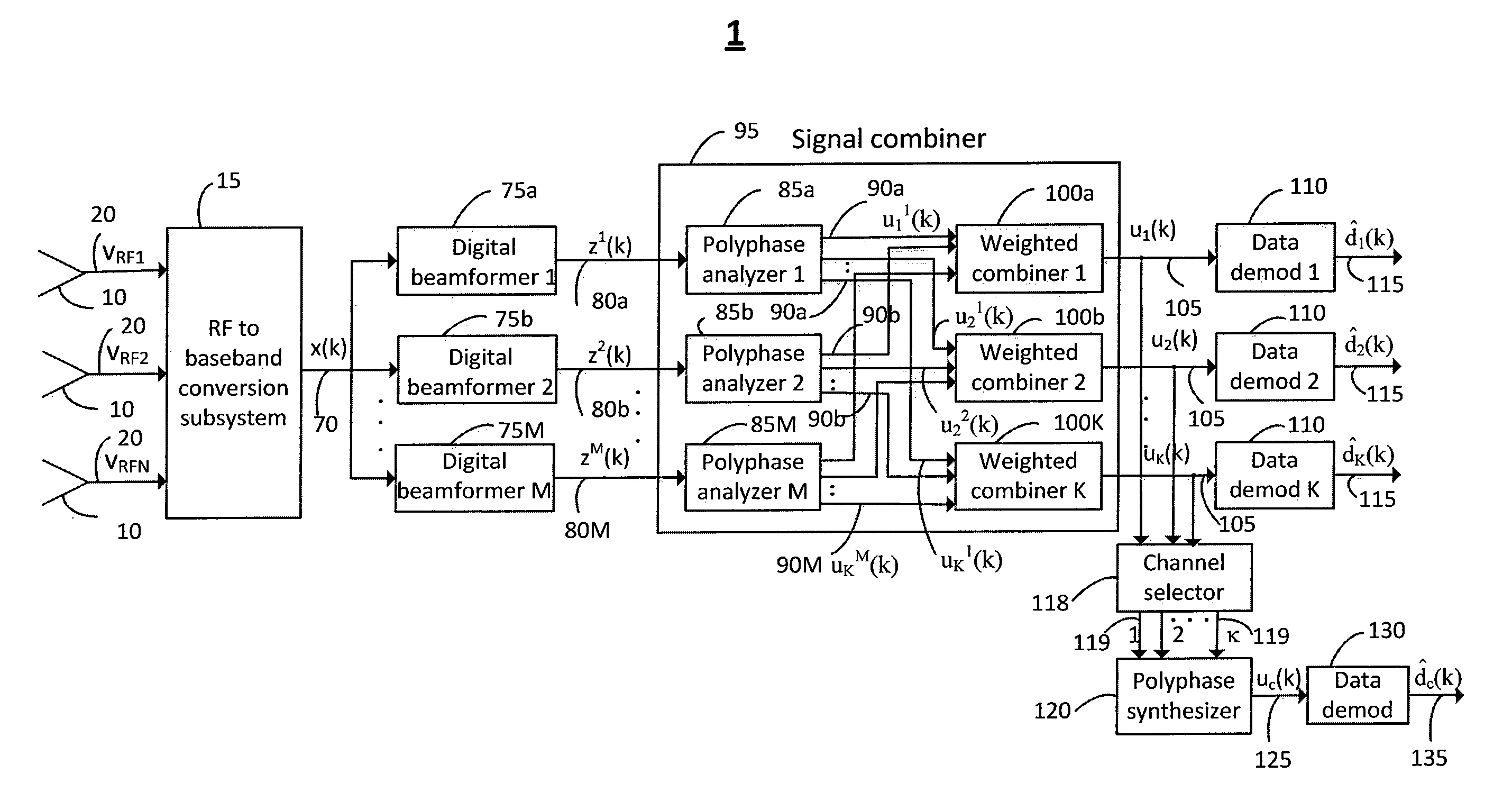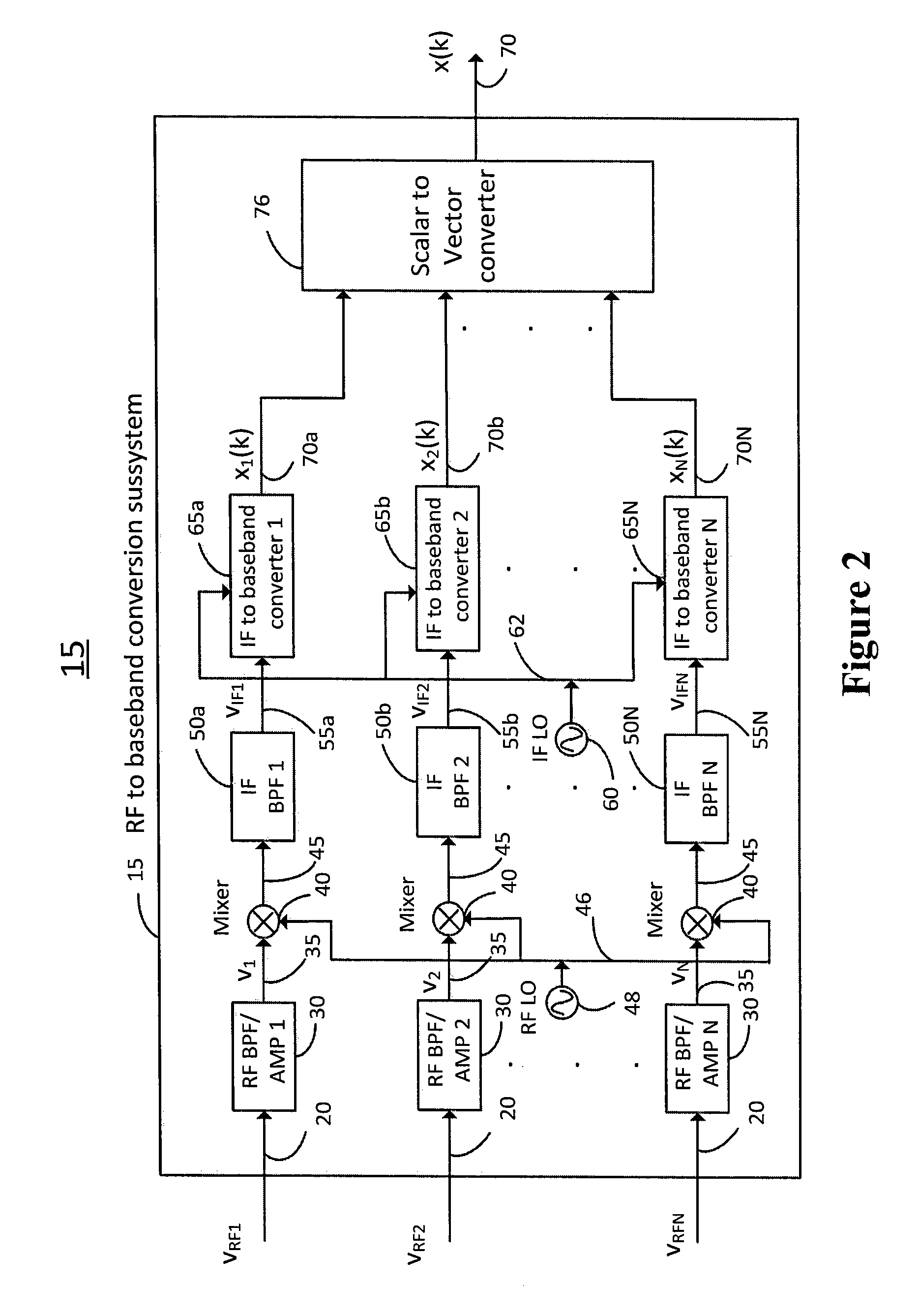Systems and methods for multi-beam antenna architectures for adaptive nulling of interference signals
a multi-beam antenna and interference signal technology, applied in the field of systems and methods for multi-beam antenna architectures for adaptive nulling of interference signals, can solve the problems of significant decorrelation between the interference of m different beamformers, and the inability of beamformers to provide the complete benefit of diversity combining, etc., and achieve the effect of reducing the availability of communication links
- Summary
- Abstract
- Description
- Claims
- Application Information
AI Technical Summary
Benefits of technology
Problems solved by technology
Method used
Image
Examples
Embodiment Construction
[0033]The following description is provided to enable any person skilled in the art to make and use the invention and sets forth the best modes contemplated by the inventor of carrying out his invention. Various modifications, however, will remain readily apparent to those skilled in the art, since the generic principles of the present invention have been defined herein specifically to provide systems and methods for adaptive multibeam antenna architectures.
[0034]FIG. 1 shows one of the preferred embodiments of the invention for the MBA system 1 for the case of the Frequency Division Multiple Accessing (FDMA) communication system wherein the various users in the coverage area of the MBA are allocated different segments of the MBA system bandwidth. In the FDMA system the users in different geographical locations have different segments of the spectrum allocated to them and may experience different MBA antenna gain due to the introduction of the nulls in the direction of the interfere...
PUM
 Login to View More
Login to View More Abstract
Description
Claims
Application Information
 Login to View More
Login to View More - R&D
- Intellectual Property
- Life Sciences
- Materials
- Tech Scout
- Unparalleled Data Quality
- Higher Quality Content
- 60% Fewer Hallucinations
Browse by: Latest US Patents, China's latest patents, Technical Efficacy Thesaurus, Application Domain, Technology Topic, Popular Technical Reports.
© 2025 PatSnap. All rights reserved.Legal|Privacy policy|Modern Slavery Act Transparency Statement|Sitemap|About US| Contact US: help@patsnap.com



